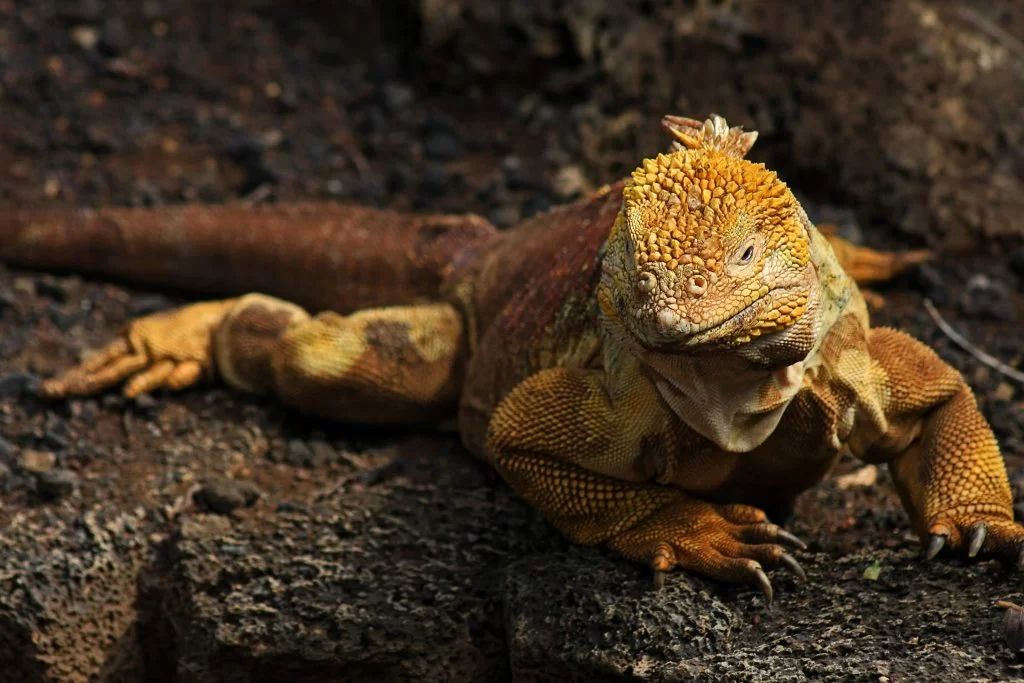The yellow iguanas inhabit the lowlands in Galapagos. They were once widespread throughout the archipelago but are now restricted to a few places. Among them are three islands – Baltra, North Seymour and Santiago – whose fates past and present are closely intertwined.
This is the story
Galapagos Conservancy staff and Galapagos National Park Guards conducted a survey in 2022 of all iguanas across the islands. This included Baltra where land iguanas were extinct, but they have been reintroduced. Around the time of World War II, U.S. soldiers brought these iguanas to North Seymour as a joke from Baltra. Nearly 4,000 individuals now inhabit the island, a large number for such a small place. Iguanas have become so numerous that they are destroying the ecosystem of the island, which was not designed to accommodate them.
Not long after the war the Baltra population, which was the origin of North Seymour’s iguanas, went extinct – largely because introduced cats preyed on them. About 50 years after the cats were removed, iguanas from North Seymour were introduced to this island.
Recent island-wide surveys show that Baltra’s population of iguanas has rapidly rebounded. Nearly 2,500 of these fascinating creatures are now out and about. This is good news for the yellow iguanas but it could also mean more conflicts between humans and the reptiles on Baltra, especially at the airport where they have started to bask on the runways.
Where does the third island of Santiago fit in this story? The island used to be home to a large population of yellow-colored iguanas. Darwin commented on the fact that it was hard to pitch a camp in Santiago because there were so many burrows. The species was also eliminated in this area after invasive species decimated iguanas and their young.
Santiago is now a perfect habitat for iguanas. It could soon be the focal point for the translocation of land iguanas in North Seymour.
Galapagos Conservancy is planning an important mission to Santiago in 2023 to determine how to fully populate the island with yellow iguanas. This would allow the rapid rebuilding on Santiago, while also removing land iguanas in North Seymour where they don’t belong. Baltra would recover independently.
The story of three islands with their iguanas illustrates how interconnected efforts are in order to restore species on Galapagos. Scientists must take into account the unique characteristics of each island, while also adapting to any new opportunities that may arise.

Yellow land iguana ©Daniel Schweich



